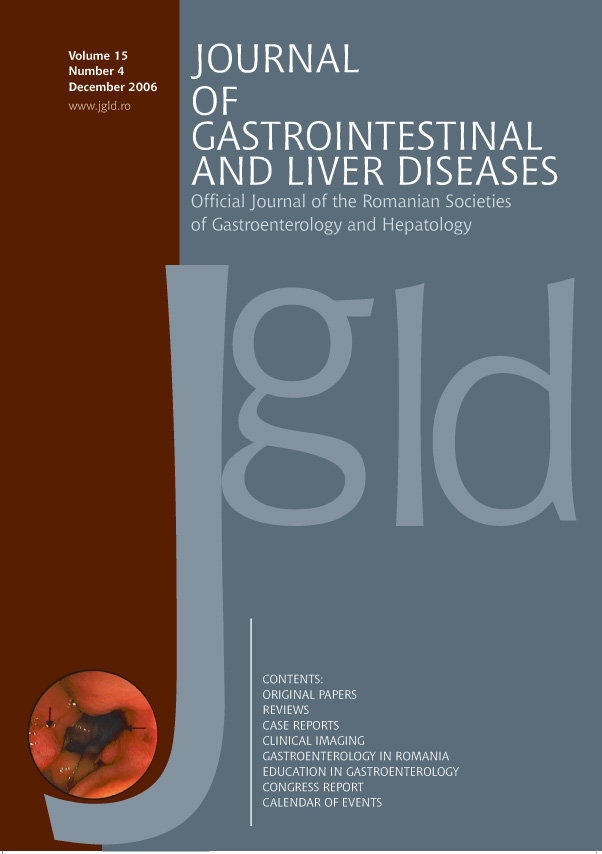The Effect of Valsartan, an Angiotensin II Receptor Antagonist, on Portal and Systemic Hemodynamics and on Renal Function in Liver Cirrhosis*
Keywords:
Valsartan, portal blood flow, systemic hemodynamics, Doppler ultrasound, liver cirrhosisAbstract
Aim. The aim of the study was to assess the effects of valsartan, a new generation angiotensin II receptor antagonist, on portal and systemic hemodynamics and on renal function in cirrhosis.
Methods. Eighty patients with cirrhosis and portal hypertension were divided in two groups as follows: group I - 40 patients who received valsartan (Diovan) 80 mg /day for 7 days and group II - 40 patients who received placebo. All the patients had hemodynamic, endocrine and renal parameters measured on day 0 and 7. The following were assessed: creatinine clearance, lithium clearance, plasma renin activity, concentration of plasma aldosteron and sodium homeostasis. Hemodynamic effects were assessed sonographically by portal flow volume and velocity evaluation, and mean arterial blood pressure.
Results. Valsartan increased the portal blood flow and the portal velocity (p<0.01). These changes occurred without any significant changes in blood pressure and renal function or the glomerular filtration rate, compared with controls (p>0.05). Valsartan also reduced the concentration of plasma aldosteron (p < 0.01) and increased the urinary sodium excretion (p < 0.001).
Conclusion. A one week treatment with valsartan in cirrhotic patients with portal hypertension determines an increase in natriuresis, which could be regarded as beneficial and changes in the portal hemodynamics which might be speculated to represent a reduction of portal resistance.
* This study was presented, in part, at the 11th United European Gastroenterology Week, Madrid, November 5, 2003.


